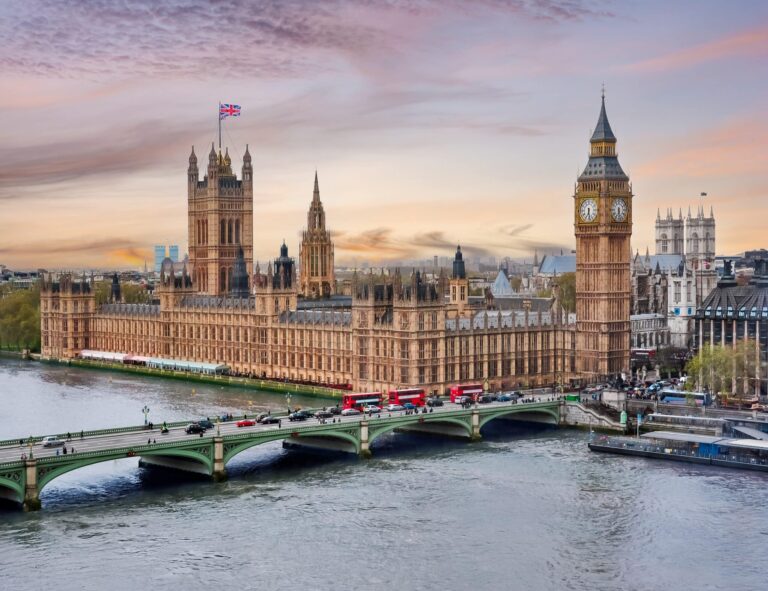
Pillar 2 – Income Inclusion Rule in the UK
The Pillar 2 rules are part of a 2-pillar solution developed by the OECD to prevent large multinational groups artificially moving profits to countries with a low rate of tax. To find out more about the 2 pillar approach see our previous blog post here.
The rules ensure that large multinational groups pay a minimum effective tax rate (ETR) of 15% in every jurisdiction the group operates. The main way this is achieved is by a top up tax, otherwise known as the Income Inclusion Rule (IIR).
As the IIR starts to come into effect this month, we have put together our answers to the most common questions from our clients below.
Which groups does the IIR apply to?
The rules apply to groups where annual group consolidated revenues have exceeded EUR 750m in 2 of the past 4 accounting periods.
How is the UK implementing the IIR?
The IIR has been implemented in the UK as the ‘Multinational top-up tax’ (MTT). The UK has also implemented a ‘Qualifying domestic minimum top-up Tax’ called the Domestic Top-up Tax (DTT).
The DTT ensures UK companies in scope of the IIR will be subject to the minimum tax rate in the UK and won’t face additional top-up charges in other countries because of the groups UK operations.
When does the IIR begin in the UK?
The MTT and DTT apply to accounting periods beginning on or after 31 December 2023.
Who pays the top up tax?
Generally, the ultimate parent will be chargeable, unless the ultimate parent is resident in a country without a qualifying IIR.
This means, most groups chargeable to the MTT will be UK headed groups. However, non-UK headed groups may be chargeable to the DTT in the UK.
When does a group need to register with HMRC?
The ultimate parent of groups in scope of the IIR with at least one company in the UK must register with HMRC within 6 months of the end of the first accounting period the rules apply. This applies to both UK headed, and non-UK headed groups.
What are the additional filing obligations in the UK?
The ultimate parent must submit an annual information return or overseas notification to HMRC within 15 months of the end of the accounting period (extended to 18 months for the first period).
The ultimate parent may also need to file a self-assessment return for MTT or DTT within 15 months of the end of the accounting period (extended to 18 months for the first period).
Are large multinational groups with small UK operations exempt from the UK IIR?
Yes. No MTT or DTT is due if:
- The average revenue for the UK is less than EUR 10m, and
- The average profit for the UK is less than EUR 1m.
The average is calculated using three accounting periods ending with the tested period.
When can safe harbours be used to reduce to the administrative burden?
Transitional safe harbours may apply for accounting periods ending on or before 30 June 2028. An election to use a transitional safe harbour in a territory exempts the group from carrying out the full effective tax rate calculation and paying the top-up tax in that territory.
Groups can elect to use a safe harbour in the UK if the group meets one of three tests.
- The threshold test – the revenue for a territory is less than EUR 10m and the aggregate profit before income tax is less than EUR 1m or a loss.
- The simplified effective tax rate test – the simplified ETR for the territory is above the minimum (15% for 2023 and 2024).
- The routine profits test – the aggregate profit before income tax of a territory is nil (or a loss) or is equal to (or less) than the qualified substance-based exclusion amount for the territory.
The calculations are done using figures from the groups qualified Country by Country (CbC) report.
The transitional safe harbours also apply to the DTT but the group will still need to register with HMRC and submit an information return/overseas notification.
There will also be a permanent safe harbour to reduce the administrative burden in territories where groups must file qualified domestic top-up tax returns (DTT in the UK).
What is a qualified Country by Country (CbC) report?
Most groups in scope of the IIR will already file a CbC report. To utilise the safe harbours, groups must have a ‘qualifying CbC Report’. This means the information used for the CbC Report is prepared on the basis of ‘qualified financial statements’.
What actions do groups in scope of the UK IIR need to take?
Although HMRC guidance is still incomplete, it’s important that groups are prepared for the income inclusion rules. At a minimum, groups in scope of the rules in the UK should:
- Identify the members of the consolidated group for the purpose of the IIR.
- Identify the groups ultimate parent and whether they are resident in a territory where Pillar 2 IIR rules have been implemented for the accounting period.
- Decide if the group would like to nominate a different filing member for the UKs MTT and DTT obligations.
- Understand if the group would like to make use of the transitional safe harbours, and if so, ensure the financial statements and CbC report are qualified.
- Understand and ensure the data points required to carry out a full ETR and adjusted income calculation are being collected.
Where can groups get advice on the implications of Pillar 2?
If you have any further questions on this please contact Adam Kefford at [email protected] or Chris Rodgers at [email protected] or call +44 1392 667000.
Written by










